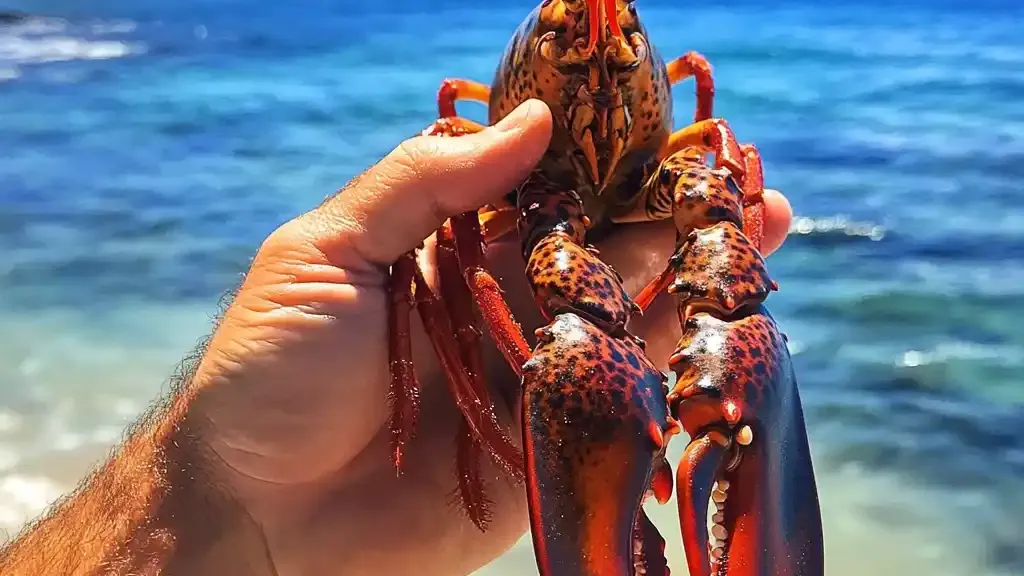Lobster claws are not just a unique feature. They are tools for survival and play a key role in how lobsters live. These claws are fascinating, both in the wild and in human culture. This article explores the structure, uses, and importance of lobster claws. Let’s dive in!
Table of contents
Anatomy of Lobster Claws: Crusher vs. Cutter
Lobsters have two distinct types of claws, each serving a unique purpose:
- Crusher claw: Thick and strong, designed to break shells and crush prey.
- Cutter claw: Slim and sharp, perfect for slicing and gripping.
These claws are made of a durable material called chitin, giving them both strength and flexibility. Fun fact: lobsters can regenerate lost claws, though it may take several molting cycles.
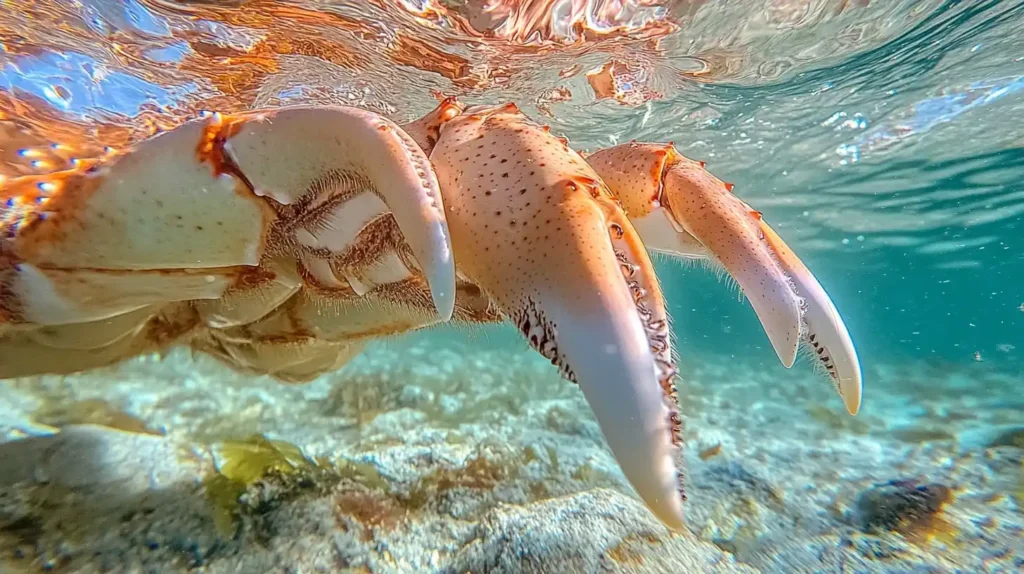
Two Types of Claws
Lobsters have two main claws:
- Crusher claw: This claw is big, heavy, and strong. Lobsters use it to break open the hard shells of crabs and mollusks. It works like a hammer, crushing anything it grips.
- Cutter claw: This claw is thinner and sharper. It is perfect for slicing and holding onto prey. Think of it as a pair of scissors.
These claws are perfectly designed for their roles. The strength of the crusher claw and the precision of the cutter claw help lobsters survive in the wild.
Claws Made for Tough Jobs
Lobster claws are made from a material called chitin. Chitin is strong but also slightly flexible, making it perfect for the jobs lobsters do. These claws are also covered in a hard shell that provides extra protection.
Claw Regrowth
Here’s an amazing fact: If a lobster loses a claw, it can grow it back! This process, called regeneration, takes time but helps lobsters stay safe and hunt for food. Lobsters often lose claws in fights or when escaping predators.
How Lobsters Use Their Claws
Lobsters rely on their claws for many daily tasks. These powerful tools help them survive in the wild. Without claws, lobsters would struggle to hunt, defend themselves, or even find a mate. Let’s explore how these claws are used.
Hunting for Food
Lobsters are not fast swimmers. Instead, they rely on their claws to catch and eat food.
- The crusher claw breaks the hard shells of crabs, mussels, and clams. This is important because lobsters eat a lot of shellfish.
- The cutter claw holds onto prey and tears it apart. This makes it easier for lobsters to eat.
These claws are essential because lobsters eat tough prey that would be impossible to consume without them.
Fighting and Defending
Lobsters also use their claws to defend themselves from predators. For instance:
- When attacked, they raise their claws to look bigger and more threatening.
- If a predator gets too close, a lobster might use its crusher claw to pinch and fight back.
This defense strategy often scares off predators, such as fish or octopuses. Even during fights with other lobsters, claws are the primary weapons.
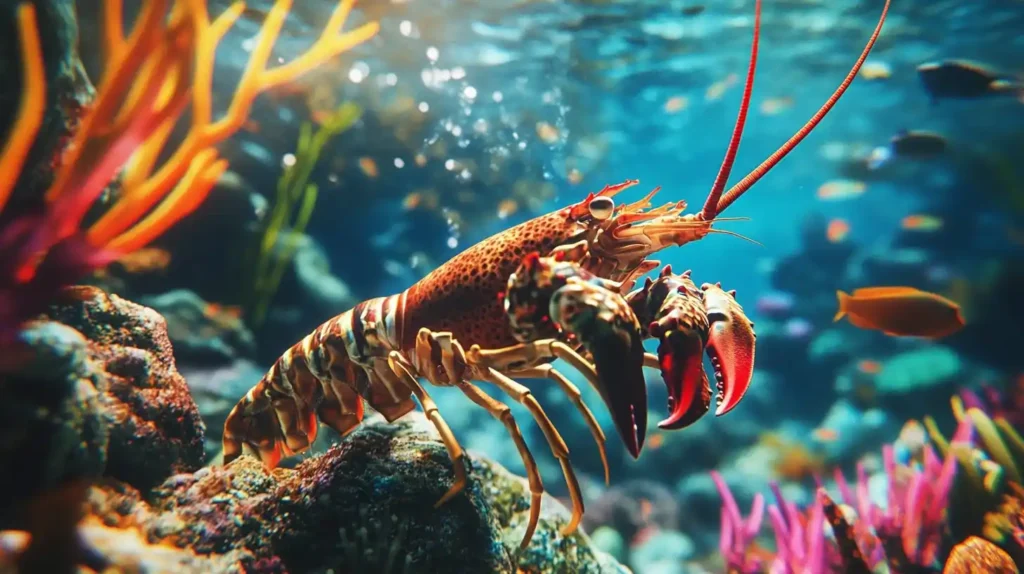
Attracting Mates
Did you know that lobsters use claws to impress potential mates? Stronger claws often show dominance and health. This makes lobsters with large claws more attractive. For example:
- A male lobster with a bigger claw might win over a female.
- Claw size can also help in territorial disputes, giving one lobster an edge over another.
Handedness in Lobsters
Interestingly, lobsters have a dominant claw, much like humans are left- or right-handed. Some lobsters have a stronger crusher claw, while others rely more on their cutter claw. This “handedness” makes them better at certain tasks, such as hunting or fighting.
Lobster Claws in Culture and Cuisine
Lobster claws are more than survival tools for lobsters. They also hold a special place in human culture and food traditions. Their rich flavor and tender meat make them a delicacy enjoyed worldwide. Let’s look at why lobster claws are so popular.
A Delicacy in Seafood Cuisine
Lobster claws are a favorite among seafood lovers. Their meat is softer and sweeter compared to other parts of the lobster. Here are a few reasons why they stand out:
- Texture: The meat in the claws is tender yet firm, making it perfect for various dishes.
- Flavor: The flavor is rich and slightly sweet, which pairs well with many seasonings.
- Versatility: Lobster claws can be boiled, steamed, grilled, or baked. They are often used in soups, salads, and pastas.
Popular dishes featuring lobster claws include lobster bisque, claw meat rolls, and butter-dipped lobster claws. Chefs often highlight the claws as the centerpiece of gourmet meals.
Cultural Significance
Lobsters, especially their claws, symbolize luxury and celebration in many cultures. Over the years, they have become a staple at special events, such as weddings, parties, and holidays.
- In coastal communities, lobster feasts are a way to celebrate local traditions.
- Lobsters and their claws are also depicted in art and media, symbolizing strength and resilience.
Health Benefits
Eating lobster claws is not just about taste it’s also a healthy choice. The meat is high in protein and low in fat, making it a great option for those looking for a nutritious meal. It also contains essential nutrients like omega-3 fatty acids, vitamins, and minerals, which support overall health. These benefits make lobster claws a delicious and wholesome choice for seafood enthusiasts.
Seafood lovers often enjoy exploring different types of proteins, just as beef enthusiasts appreciate the variety of cuts available. For example, What is Thinly Sliced Beef Called? delves into the different names and uses of thinly sliced beef in various cuisines. Whether you prefer seafood or meat, understanding different cuts and preparations can enhance your culinary experience.
Amazing Facts About Lobster Claws
Lobster claws are not just ordinary appendages. They are full of surprises! From their incredible strength to their ability to regrow, lobster claws are fascinating in many ways. Let’s uncover some amazing facts.
1. Remarkable Strength
Lobster claws are incredibly powerful.
- The crusher claw can exert up to 100 pounds of pressure per square inch. This is enough to break shells, crack bones, or even crush a human finger.
- The cutter claw, while not as strong, is precise and sharp. It acts like a pair of scissors, slicing through soft prey with ease.
This strength is crucial for survival, as it helps lobsters catch and eat hard-shelled prey like crabs and clams.
2. Claws Regrow After Loss
Lobsters have a unique ability to regrow lost claws.
- If a claw is lost in a fight or to escape a predator, the lobster can regenerate it during molting.
- Regrowth takes time, and the new claw is usually smaller at first, but it eventually reaches full size.
This adaptation helps lobsters stay competitive in the wild.
3. Lobsters Are “Handed”
Lobsters have a dominant claw, much like humans are left- or right-handed.
- One claw develops as the stronger crusher claw, while the other becomes the cutter claw.
- This specialization allows lobsters to perform tasks more efficiently.
Interestingly, if a lobster loses its dominant claw, the roles can reverse during regrowth. The new claw may develop into the opposite type.
4. Claw Size Reflects Age
The size of a lobster’s claws can tell you a lot about its age and health. Larger claws usually mean an older lobster. This is because lobsters grow throughout their lives, and their claws become bigger with each molt.
5. Lobster Claws in Science
Scientists study lobster claws for their unique properties. The strength and structure of claws inspire advancements in material science and engineering. Researchers are exploring how to create stronger, more flexible materials based on lobster claw design.
Protecting Lobsters and Their Claws
Lobsters, along with their iconic claws, are facing growing threats. From overfishing to climate change, many factors are putting their populations at risk. It’s essential to understand these challenges and support efforts to protect lobsters and their claws.
Threats to Lobsters
Lobsters are a key part of marine ecosystems, but they face several dangers:
- Overfishing: High demand for lobsters, especially their claws, has led to overharvesting in some areas. This makes it harder for populations to recover.
- Climate change: Warmer waters and changing ocean conditions affect lobster habitats and breeding patterns. Lobsters prefer cool waters, and rising temperatures are forcing them to migrate further north.
- Habitat destruction: Coastal development and pollution damage the seafloor, which is critical for lobsters to hide, hunt, and reproduce.
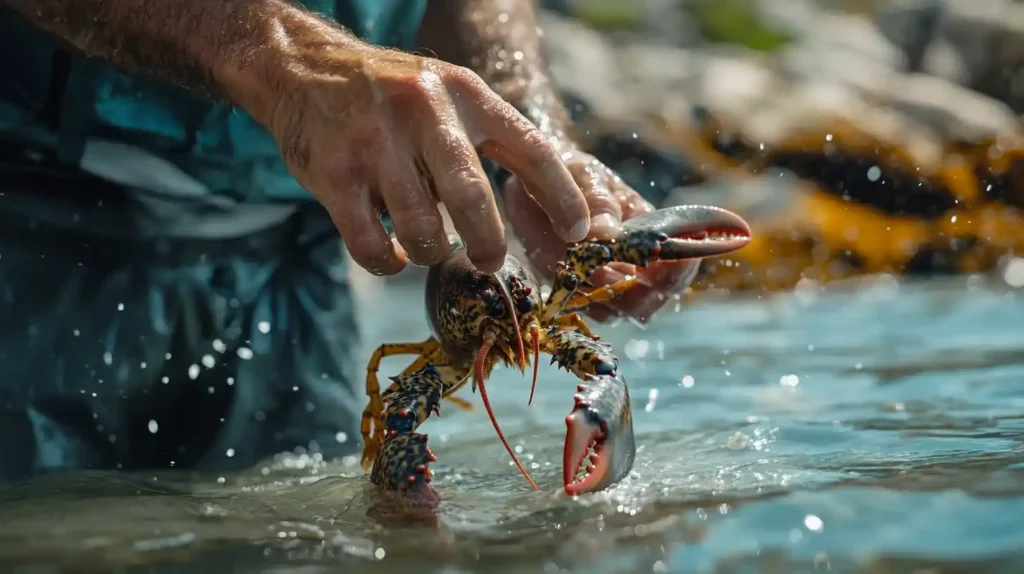
Conservation Efforts
To ensure that lobsters thrive, conservation measures are being put in place:
- Fishing limits: Governments and organizations are setting quotas to prevent overfishing. These rules ensure that lobsters have enough time to grow and reproduce.
- Size regulations: Fishermen are encouraged to release smaller lobsters, giving them a chance to mature and breed.
- Marine protected areas: Certain zones are designated as no-fishing zones, allowing lobster populations to recover.
By following these guidelines, we can help maintain healthy lobster populations for the future.
What You Can Do
Consumers can play a big role in protecting lobsters. Here’s how:
- Choose seafood from sustainable sources. Look for certifications like the Marine Stewardship Council (MSC).
- Support local fishermen who follow ethical fishing practices.
- Spread awareness about the importance of protecting marine life.
FAQs About Lobster Claws
Many people have questions about lobster claws. These unique features are fascinating, and there’s a lot to learn about them. Below are some of the most frequently asked questions, answered in simple terms.
1. Why do lobsters have two different types of claws?
Lobsters have two claws because each serves a special purpose:
- The crusher claw is for breaking hard shells.
- The cutter claw is for slicing and holding prey.
This combination makes lobsters excellent hunters and helps them survive in the wild.
2. How strong are lobster claws?
Lobster claws are incredibly strong and serve as a critical survival tool for these fascinating creatures. Their strength is not just impressive—it’s vital for their ability to hunt, defend themselves, and thrive in their habitats. Let’s break down just how powerful lobster claws are.
Crusher Claw Strength
The crusher claw is the powerhouse of a lobster’s anatomy. This claw can exert a force of up to 100 pounds per square inch (psi). To put that into perspective:
- That’s strong enough to crack the tough shells of crabs and clams, which make up a significant portion of a lobster’s diet.
- It’s also strong enough to cause significant injury, making it a formidable defense mechanism against predators.
The crusher claw works like a hammer. It’s large, heavy, and designed to deliver crushing blows to its target. Scientists often compare its strength to industrial tools, demonstrating how perfectly nature has equipped lobsters for survival.
Cutter Claw Precision
While the crusher claw is about power, the cutter claw is about precision. Although it doesn’t have the same force as the crusher claw, it is sharp and fast.
- The cutter claw acts like a pair of scissors, slicing through soft prey and holding onto slippery food.
- Its strength lies in its grip and sharp edges, making it perfect for tearing apart prey with precision.
This balance of power and precision gives lobsters an edge in the wild, allowing them to handle a wide variety of prey.
Why Are Lobster Claws So Strong?
The strength of lobster claws comes from their unique design:
- Muscle power: Lobsters have specialized muscles in their claws, enabling them to exert significant force.
- Structure: The claws are made from chitin, a durable and flexible material, which allows them to withstand and deliver strong impacts.
- Evolutionary adaptation: Over time, lobsters have developed stronger claws to adapt to their diet and the challenges of their environment.
How Does Their Strength Help Lobsters?
Lobster claws are essential for survival. Their strength allows them to:
- Break open hard shells to access food.
- Fight off predators and rivals during territorial disputes.
- Assert dominance in mating rituals, as larger and stronger claws are often a sign of fitness.
Be Careful Around Live Lobsters
If you’ve ever handled a live lobster, you know that their claws can deliver a painful pinch. While their strength is incredible in the wild, it’s important to handle lobsters carefully to avoid injury. live lobsters—they can deliver a serious pinch.
3. Can a lobster survive without a claw?
Yes, lobsters can live without a claw. If a claw is lost, the lobster can regenerate it during molting.
- The new claw starts small but grows back to its full size over time.
- This ability helps lobsters survive injuries and escape predators.
4. Are lobster claws always the same size?
No, the two claws are usually different sizes. The crusher claw is larger and stronger, while the cutter claw is smaller and sharper.
- This difference is called “claw asymmetry.”
- However, if a lobster loses its claws, the new ones can grow back with reversed roles.
5. Are there plant-based alternatives to lobster claws?
Yes! With the rise of plant-based seafood, there are vegan options that mimic the taste and texture of lobster claws. These alternatives are made from ingredients like soy, seaweed, and pea protein. They’re great for people who want to avoid animal products while enjoying seafood flavors.
6. How can you tell if a lobster is healthy by its claws?
Healthy lobsters usually have:
- Intact, well-formed claws.
- Strong grip strength when they’re alive.
- No visible cracks or damage on the claws.
If you’re buying lobster, these are good signs to look for.
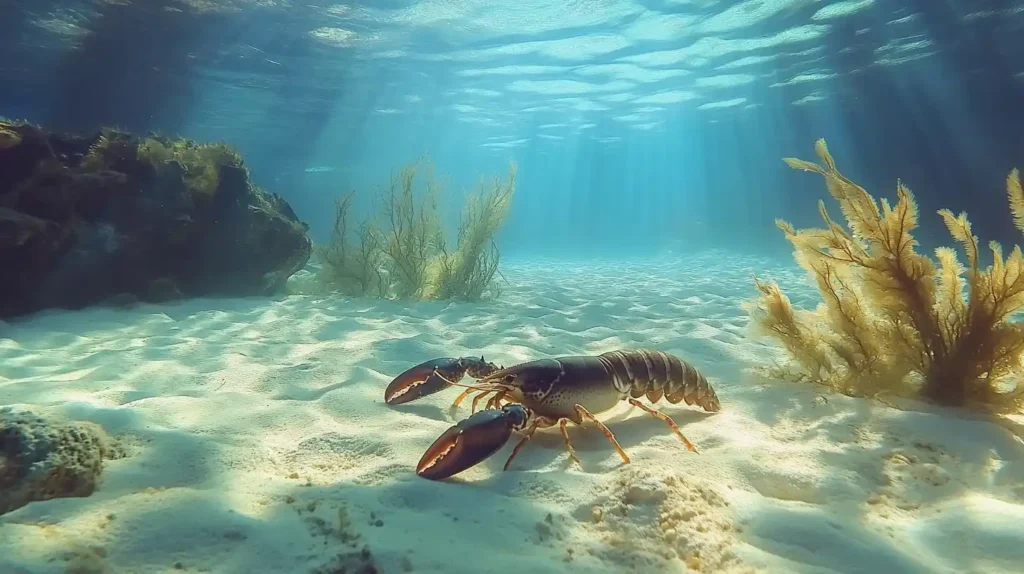
Conclusion
Lobster claws are remarkable in every way. They are not just tools for survival but symbols of strength and adaptability. From their unique anatomy to their role in behavior, culture, and cuisine, lobster claws showcase the wonders of nature.
We’ve explored how the crusher claw and cutter claw work together to help lobsters hunt, defend, and thrive in their environments. We’ve also seen how these claws have captured human admiration, both as a delicacy and as an inspiration for science. Despite their strength, lobsters face challenges like overfishing and habitat loss, making conservation efforts critical.
As seafood lovers, we have a role to play. Choosing sustainably sourced lobster and supporting ethical fishing practices can make a big difference. By appreciating and protecting lobsters and their claws, we help ensure they remain a part of our world for generations to come.
So next time you enjoy lobster claws, take a moment to think about their journey from the ocean to your plate. Let’s celebrate their importance while working to preserve their future.

